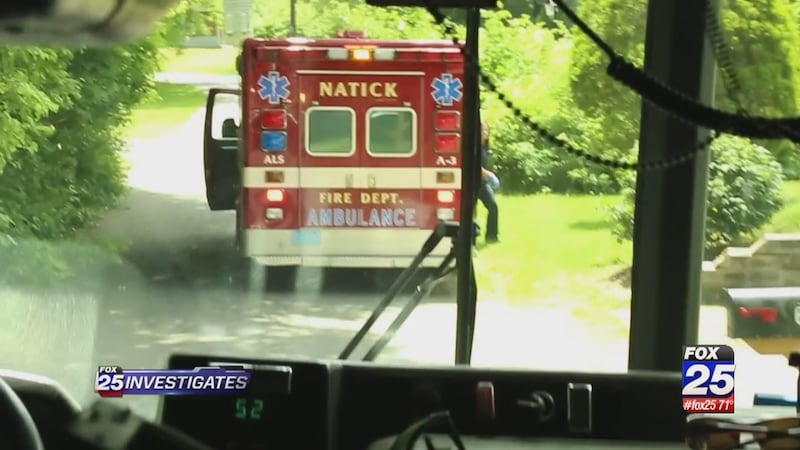BOSTON — It can come down to a matter of minutes.
“It can be the difference between life and death” Chief Richard White of the Natick Fire Department told FOX25.
In the Natick , there are four fire stations to serve 32,000 people and the average response time is below the national standard of 6.5 minutes set by the National Fire Protection Association, or NFPA.
White said those times can be impacted by various factors including distance and the number of fire stations in each municipality.
“It’s the difference between a fatal fire and a rescue and getting the fire out with minimal damage” White said.
FOX25 Investigates found through an open records request that last year, out of 340 departments, over a third reported average response times higher than the national standard, 46 of those departments had response time greater than 10 minutes.
“If a community is seeing 13, 14, 15 minute response times I would strongly suggest they ask the question, what would we have to do to close that response time,” said Ken Willette, the division manager for the NFPA.
Willette told FOX25 at 10 minutes a fire can be devastating.
“At that benchmark the entire room explodes into flame, there's no breathable air, and anybody who’s in that space has little chance of survival," he said.
Red flags went up when we saw the worst offender: the Plympton Fire Department. They reported an average response time of 16,565 minutes last year- almost eleven and a half days per call.
FOX25 double checked, and Plympton officials said their average response was 5.8 minutes for 2015
After comparing 2014 to 2015 data, FOX25 found 14 other departments that doubled, tripled, or even quadrupled their response time from year to year.
Bridgewater Fire Department reported to the state an 11.1 minute average response time for 2015, but the fire chief showed reports with an average response time of just under 4 minutes.
The Massachusetts Department of Fire Services said it's up to each department "to review, correct and resubmit their incident data."
They rely on each department to send accurate response times, but that isn't always the case. That's due largely in part because there isn't a uniform way of reporting. Many send response times electronically, while some still enter the data manually, which opens the door for typos.
Plympton Fire said they started using new tracking software just this year, while others municipalities stated issues of sharing dispatch with other departments.
The data collected is sent to the National Fire Incident Reporting System, or NFIRS, which is used to evaluate fire departments around the country and identify needs.
The 15.1 minute response average last year in Phillipston, Massachusetts turned out to be accurate and one of the longest in the area.
Fire Chief Richard Stevens said the department only has two full time firefighters, with the majority being volunteers. While volunteer fire departments have the same training as regular fire departments, they have a tough time meeting the 6.5 minute national standard.
”We could always do better. And it's only because we are not here and not available. They're elsewhere.” Stevens said. Phillipston has applied for a federal fire grant to add two additional full time firefighters, which Stevens said will drastically help reduce response times.
A spokesperson from the Massachusetts Department of Fire Service told us they help departments be more accurate through training, quality control and feedback reports.
In the end it's up to the department to resubmit updated reports.
Cox Media Group








